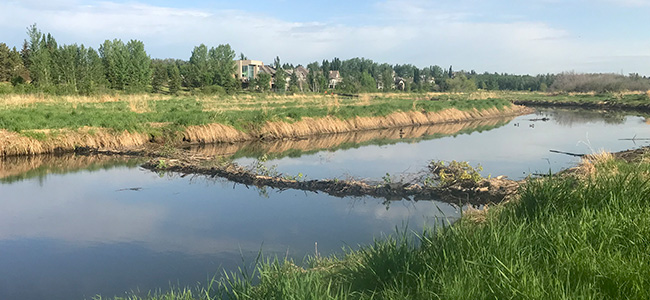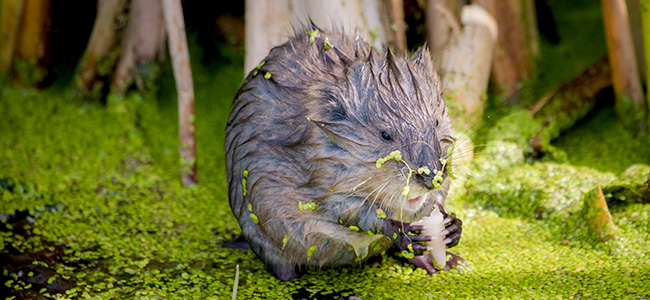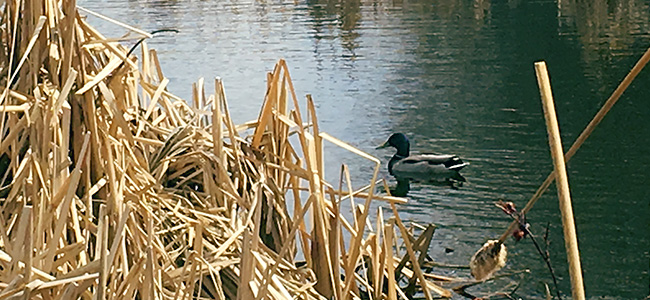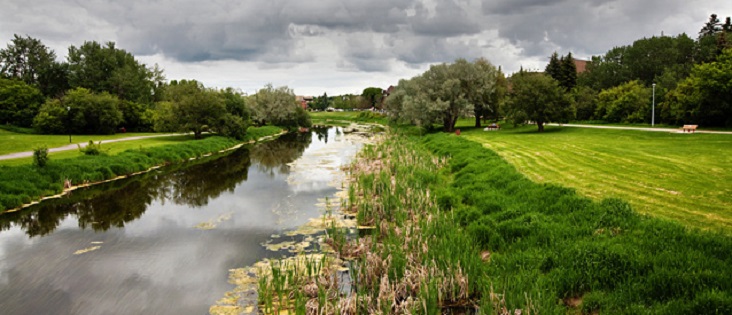
River Critters
The Sturgeon River is home to various mammals, birds, fish and insects.
Beavers and Muskrats
Beavers are very important for the health of the Sturgeon River and are known as a keystone species. They have a tremendous impact on the environment, creating new aquatic habitats for fish, amphibians, and birds, raising the water table through damming, preventing erosion and helping to purify the water.

Beavers build dams to create suitable habitats but live in separate lodges. Beavers are excellent swimmers - they can swim at speeds of up to eight kilometres an hour and can stay underwater for 15 minutes at a time. They also have extra eyelids which allow them to see underwater, and closable nostrils and ears.
Muskrats typically dig burrows into the banks of rivers and ponds to keep cool and are known to build lodges out of cattails and live in them with their large families. They can hold their breath for 12-17 minutes underwater, can swim five kilometres an hour, and even swim backward.

Photo Credit: Tim Osborne
Beavers and muskrats are known to often share food and shelter over the winter.
The city monitors beavers using wildlife cameras and manages the beaver population in the area through selective feeding, tree protection in park areas, and relocation when necessary. The City keeps populations from establishing in stormwater facilities to prevent infrastructure damage and flooding.
Birds
Birds commonly seen near the Sturgeon River include great blue herons, grebes, and red-winged blackbirds, as well as numerous waterfowl species, including ducks, coots, terns, geese, swallows, shorebirds, and occasionally pelicans.

The Sturgeon flows through Big Lake, which is an internationally known "Important Bird Area" that provides habitat for thousands of migratory birds every year.
Fish
While the Sturgeon River is no longer home to its namesake fish species, other fish can be found, including minnows, northern pike and white sucker. Occasionally, walleye and goldeye can also be found in the river.
The Sturgeon River also contains small creatures that look like shrimp called Gammarus, colloquially known as sideswimmers, or “scuds”. These are small crustaceans that scavenge detritus and aquatic vegetation. They serve as a food source for fish.
While the waters of the Sturgeon River are normally hospitable to fish, low levels of dissolved oxygen in the summer and winter can cause fish die-offs. Low dissolved oxygen in the water occurs for different reasons during the different seasons. In summer, warm waters hold less oxygen than cooler waters. In winter, oxygen is depleted in the water through plant respiration (and subsequent release of CO2) during long winter nights and the decomposition of plant and algal matter.
Leaving beaver dams in place ensures there are pools of deeper water where fish can find refuge in the hot summer months. Minimizing the use of fertilizers and cleaning up after pets can reduce the amount of nutrients that flow from the land and into the river.
If a fish kill die-off does occur, City staff checks for signs of low oxygen as well as activities in the area to ensure it was not the result of a spill or other activity in the immediate area. Public Operations then cleans up the dead fish to prevent decomposition and odour.
If you notice many dead fish in the water, please call the City at 780-459-1500, or contact Alberta Fish and Wildlife.
Insects
In addition to Gammarus, several other species of invertebrates can be found in and along the Sturgeon River. These include dragonfly nymphs, mites, mayflies, mosquito larvae, damselflies, water striders, midges, snails, leeches, water boatmen and backswimmers. Related Pages
Last edited: April 29, 2024


